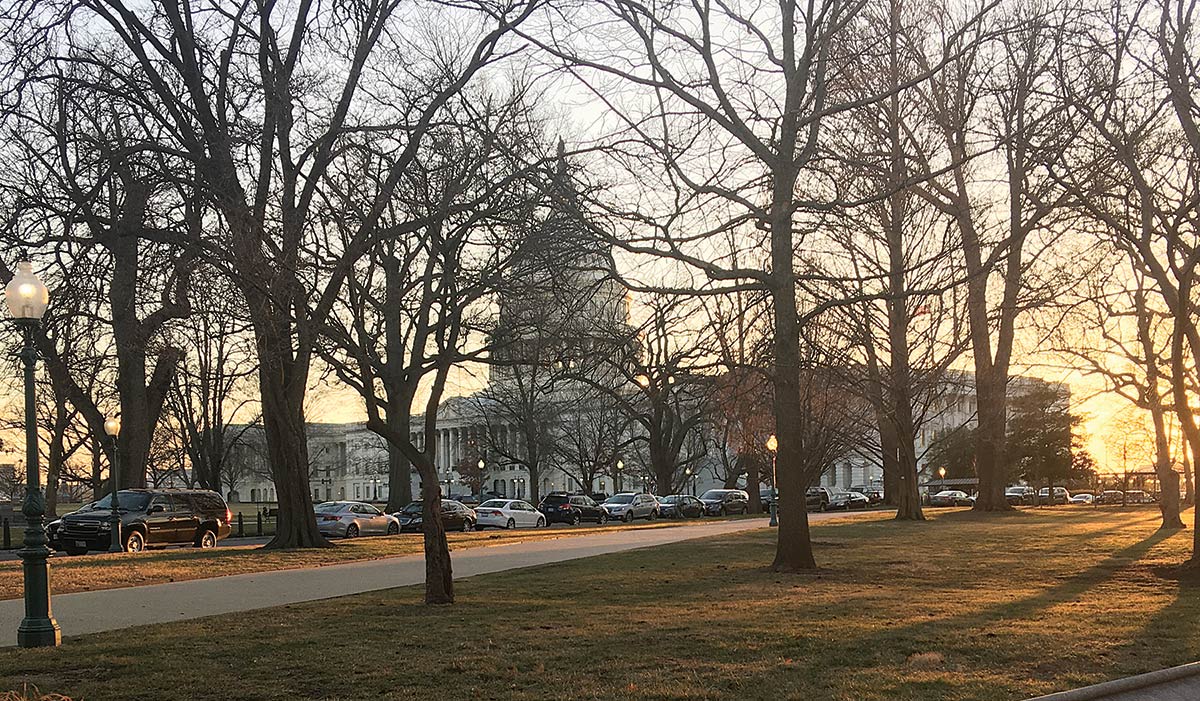
Going to Bat for the Land and Water Conservation Fund
By Lynn Davis

U.S. Capitol Building ![]() Photo by Amanda Wheelock
Photo by Amanda Wheelock
An acquisition of 216 ecologically significant acres near the Appalachian Trail in Pawling, New York is a good example of why the Appalachian Trail Conservancy (ATC) is teed up to promote the reauthorization of the Land and Water Conservation Fund (LWCF). Established more than five decades ago, LWCF supports the protection of federal lands and waters through voluntary conservation initiatives.
U.S. Capitol Building ![]() Photo by Amanda Wheelock
Photo by Amanda Wheelock
An acquisition of 216 ecologically significant acres near the Appalachian Trail in Pawling, New York is a good example of why the Appalachian Trail Conservancy (ATC) is teed up to promote the reauthorization of the Land and Water Conservation Fund (LWCF). Established more than five decades ago, LWCF supports the protection of federal lands and waters through voluntary conservation initiatives.
Under congressional authorization provided through LWCF and the recent passage of the 2018 federal budget, $2 million will purchase private property in Pawling along the Trail. An additional $300,000 in private funding — including a contribution from the ATC made possible by the Volgenau Foundation — is being raised to complete the transaction.
The Pawling land might be considered, in baseball terminology, a grand slam for its protection of wildlife, preservation of scenic views along the Trail, and improved recreation experiences for visitors, many of who travel from New York City to hike this Trail section. The National Park Service had identified this area as its number one priority for land protection in the United States and essential to the management of the Appalachian National Scenic Trail.
The added acreage in this area enables rerouting of the Trail to protect the habitat of several important species. The
acquisition allows the Trail to be relocated out of the wetlands to a more suitable area sustaining the striking views from Cat Rocks of the beautiful and historic Hudson Valley and providing visitors with enhanced hiking experiences. The Pawling, New York project is one of several LWCF-projects along the Trail this year and one of hundreds of similar undertakings along the Trail (and throughout the country) over more than 50 years.
Congressionally established in 1964, LWCF does not use taxpayer dollars but, instead, invests earnings from offshore oil and gas leasing. Under this fund, Congress can appropriate up to $900 million each year to provide grants to state and local governments and to federal agencies including the National Park Service and U.S. Forest Service. The 2018 federal budget caps LWCF appropriations at $425 million, less than half of what can be used to meet the intentions of the fund.
A diverse coalition promoting LWCF — which includes the ATC — is actively and diligently advocating for increased appropriations and for all-important reauthorization of LWCF, which expires September 30, 2018 and could end this successful funding program.
Protection of land along the A.T. has been a priority for Trail managers ever since the Trail was established. Over the years, this has resulted in one of the most significant and successful land acquisition programs in the United States. Today, there is a 250,000-acre greenway around the Trail that connects significant public lands in the eastern United States. The A.T. Landscape Partnership — a coalition of public and private partners, co-convened by the ATC and the National Park Service —is actively engaged in safeguarding the picturesque vistas, wildlife habitat, farmlands, and valuable historic sites that are all part of the Trail experience.
For more information about ATC’s position on the Land Water Conservation Fund and appropriations to deferred maintenance visit: appalachiantrail.org/lwcf